Search
Search Results
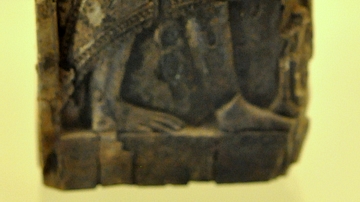
Image
Carved Ivory from Sam'al
Ivory during the early ion age at Sam'al was used to decorate precious furniture and cosmetics boxes and most of them, when found, were burnt and charcolized by fire. Egyptianized scenes were the predominant ones. 9th to 7th century BCE...
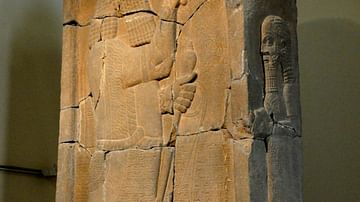
Image
Sam'al Stele of King Esarhaddon
This commemorative basalt stele depicts the Assyrian king Esarhaddon worshiping gods and symbols of gods. The king's left hand holds a royal mace and two ropes. These ropes pass through the lips of two captives. The kneeling smaller figure...
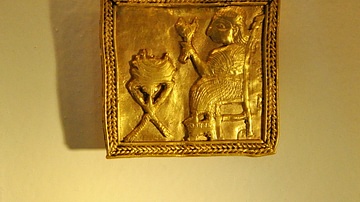
Image
Gold Plate from Sam'al
Golden plate with a funeral scene. 9th to 7th century BCE. From Sam'al/Zincirli, modern-day Southern Turkey. (Pergamon Museum, Berlin)
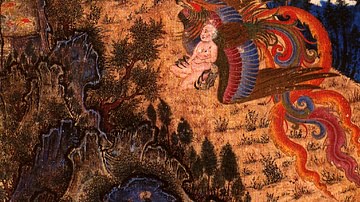
Definition
Ancient Persian Mythology
The mythology of ancient Persia originally developed in the region known as Greater Iran (the Caucasus, Central Asia, South Asia, and West Asia). The Persians were initially part of a migratory people who referred to themselves as Aryan...
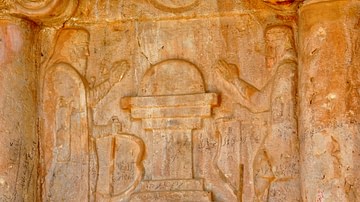
Article
Ancient Persian Gods, Heroes, and Creatures - The Complete List
The term 'mythology' comes from the Greek mythos (story-of-the-people) and logos (word or speech), meaning the spoken story of a people. Every civilization of the ancient world developed a belief system, which is characterized as 'mythology'...
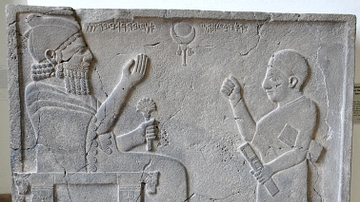
Image
Prince Barrakib
This basalt wall relief depicts Prince Barrakib (Bar-Kib) sitting on a throne. Before him, a scribe stands with a writing tablet beneath his arm. The Aramaic inscription besides his head reads "I'm Barrakib, son of Panammwua". After this...
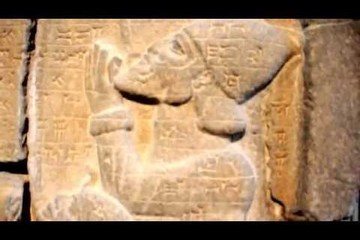
Video
Sam'al Stela of the Assyrian King Esarhaddon
This commemorative basalt stela depicts the Assyrian king Esarhaddon worshiping gods and symbols of gods. The king's left hand holds a royal mace and two ropes. These ropes pass through the lips of two captives. The kneeling smaller figure...
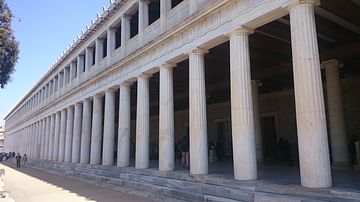
Interview
Interview: American School of Classical Studies at Athens
The American School of Classical Studies in Greece has been running its operations since the 19th century CE, with excavations across the country and an academic program that runs throughout the summer and fall. They are arguably the most...
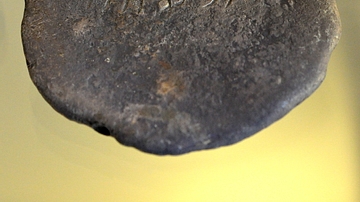
Image
Silver from Sam'al
This rounded piece of silver (which is part of a hack silver) was used as a method of payment. Its weigh is 497.38 g. The overlying Aramaic inscription mentions that this is a property of Barrakib, son of Panammuwa, Prince of Sam'al. 9th...
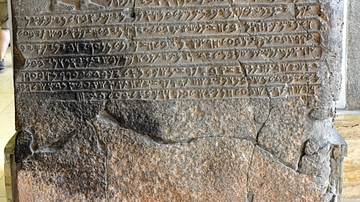
Image
Stele of Prince Kilamuwa from Sam'al
This basalt stele was inscribed with Phoenician language. The upper part of the stele depicts Kilamuwa praying in front of symbols of deities. Circa 825 BCE. From one of palaces at the citadel of Sam'al/Zincirli, modern-day Southern Turkey...